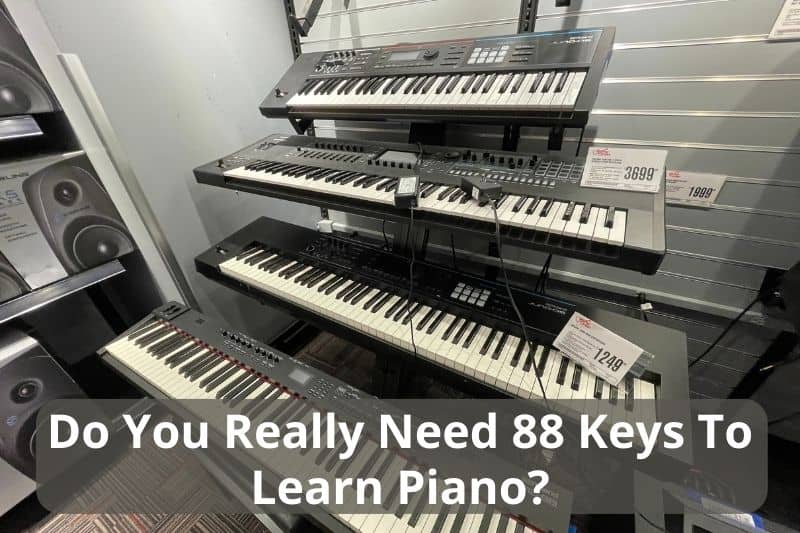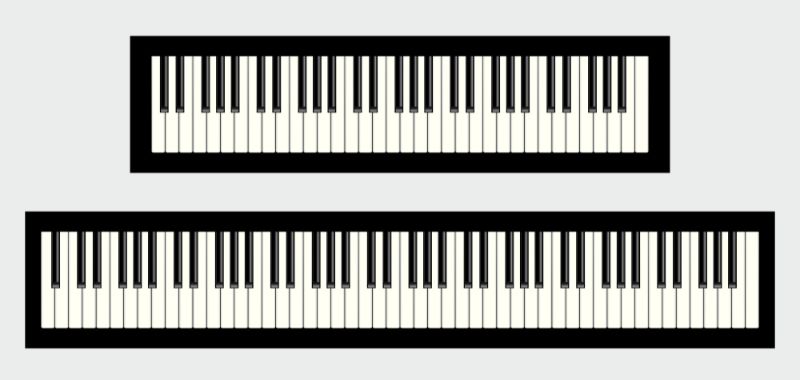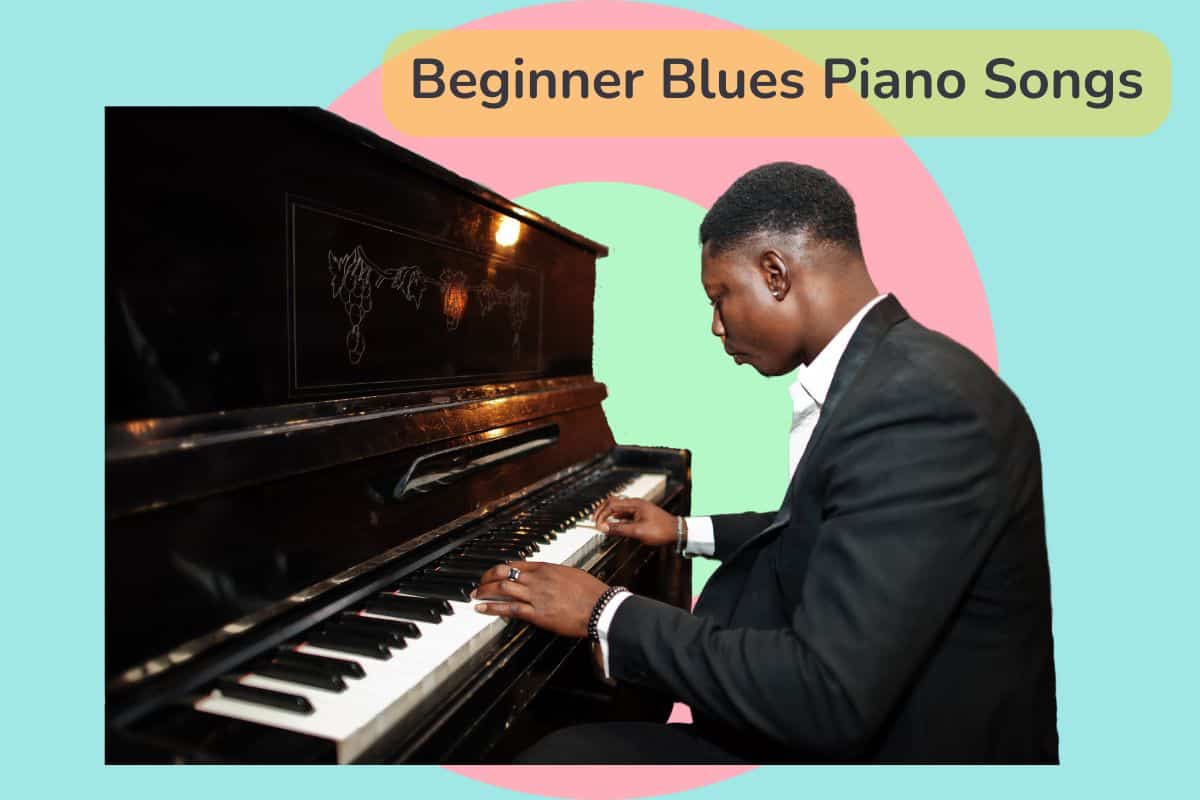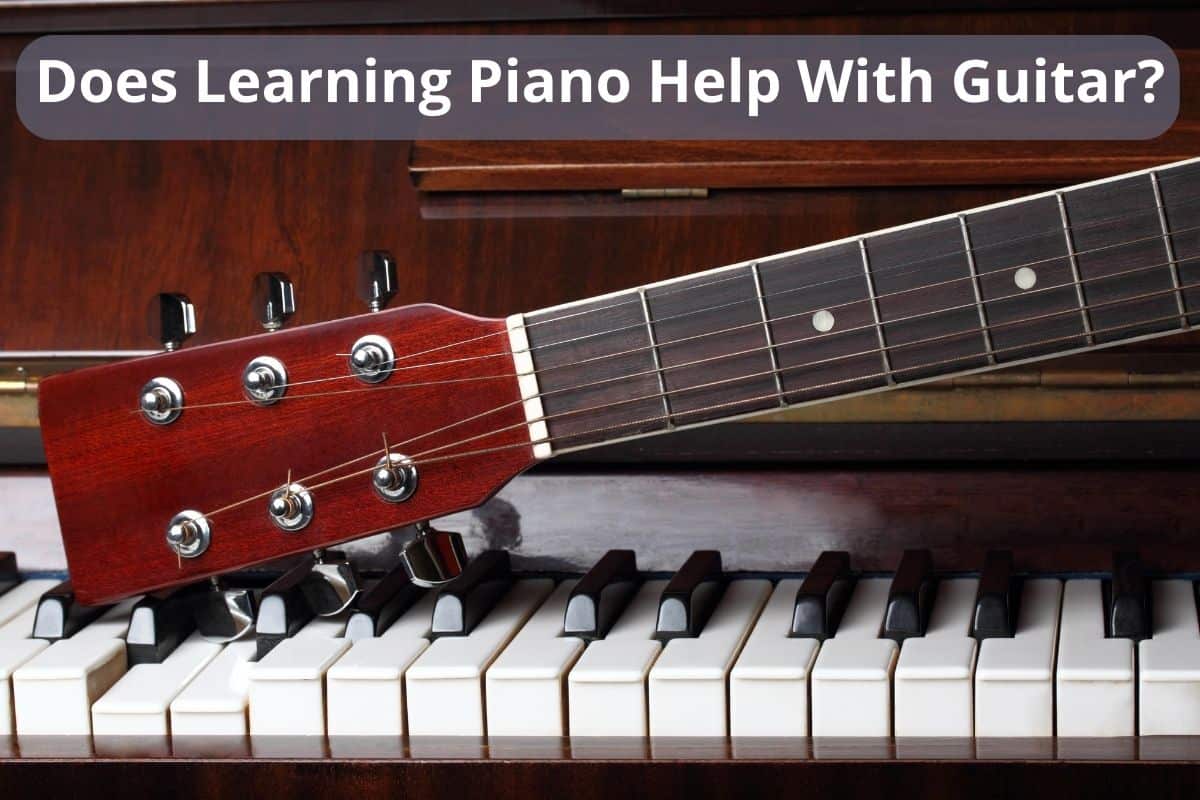When starting to learn piano, lots of beginners wonder if an 88-key piano is necessary. While a standard piano has the full 88 keys, you don’t need to have all of them to begin your musical journey.

For most popular music and learning the fundamentals, a keyboard with 61 keys—encompassing five octaves—is sufficient. Beginning with a smaller range allows you to familiarize yourself with the core piano territory, where most lessons and pieces for beginners are centered.
Basics of Piano Keyboards
The number of keys on your keyboard influences not only the range of music you can play but also the versatility and skill development.
88 Keys Standard
The standard full-sized piano comes with 88 keys, providing the widest range of notes—from the deep bass to the highest treble. This is essential for playing a comprehensive repertoire, especially in classical music. If you’re setting your sights on mastering the piano, investing in a full 88-key keyboard is beneficial for the long term. However, you might not need all 88 keys immediately as a beginner, but having them available allows for growth without the need to upgrade later.
Alternative Keyboard Sizes
Besides the full-size keyboard, digital pianos and keyboards with fewer keys, like 61 keys or 49 keys, are common and can be a good starting point for beginners. These scaled-down versions are more portable and budget-friendly. A 61-key keyboard still allows you to play most modern music and is compatible with many MIDI keyboard interfaces for digital music production. Just be aware that you might outgrow these sizes if you decide to delve into more complex pieces that require a full range.
Role of Black and White Keys
The black and white keys on a keyboard represent different notes. The white keys correspond to the seven natural notes (A, B, C, D, E, F, G), while the black keys are used for sharp and flat notes, and they play a critical role in the chromatic scale. Learning the correct placement and use of these keys is fundamental to playing piano music accurately and with proper technique, regardless of the number of keys on your keyboard.
Key Considerations for Beginners
When you’re beginning to learn to play the piano, the type of keyboard you choose can impact your learning experience. Here’s a look at what to consider regarding keys, their feel, and practical factors like budget and space.

Learning on Less Than 88 Keys
If you’re a beginner, starting on less than 88 keys might seem like a cost-effective choice. For initial practice, you can learn the basics on a smaller keyboard, since the core 12-note sequence repeats across all octaves. However, as you progress, having 88 keys is beneficial for advanced pieces that require a full range of notes.
Key Weight and Resistance
Touch response is crucial for developing your technique. Weighted keys mimic the resistance of a traditional piano and can help you build finger strength and expression. Weighted keys are found in higher-end keyboards and pianos, while semi-weighted keys offer a middle ground, having less resistance but still providing a more realistic touch than unweighted keys.
Budget and Space Constraints
Your budget and available space will influence your choice. Smaller keyboards and beginner pianos can be more affordable and fit comfortably in compact spaces. Assess your setup to decide if a full 88-key piano is feasible or if a more compact solution is necessary for your current situation. Remember, investing in what fits your space and budget can allow for consistent practice and steady improvement.
The Journey of Learning Piano
When you start learning the piano, it’s important to match your instrument with your stage of learning. As you progress, you’ll find that a full 88-key piano offers a range of possibilities that enhance your musical expression.
Starting with the Basics
Initially, your focus is on understanding the fundamental concepts of music: scales, chords, and simple melodies. A smaller keyboard, even with fewer than 88 keys, can be sufficient for this stage. For example, a 61-key keyboard comfortably covers several octaves, allowing you to get accustomed to the layout of the keys and basic hand positioning. Yamaha P45, a popular choice for beginners, offers a balanced experience with 88 keys but can be mimicked to some extent on smaller keyboards for those first piano lessons.
Graduating to a Full 88-Key Setup
As you progress, you’ll likely feel the need to upgrade to a full 88-key instrument. This setup is not just about the quantity of keys, but also the quality of play and the breadth of music you can explore. Classical pieces and complex compositions often require the full range of a traditional piano. Learning on an 88-key keyboard ensures you’re not limited in your repertoire and supports the development of proper technique and hand movements for more advanced pieces. An 88-key piano positions you well for growth, allowing you to fully express your musicality as you become more proficient.
Frequently Asked Questions
When preparing to learn piano, know that the size of your keyboard can affect your learning experience. Below are some common questions and answers regarding the number of keys.
What are the advantages of learning piano on an 88-key keyboard?
On an 88-key keyboard, you get the full range of octaves found on traditional pianos. This expands your ability to play a wider variety of music and gives you the full spectrum of notes used in classical and modern pieces.
Can beginners effectively learn piano on a 61-key keyboard?
Yes, beginners can effectively learn on a 61-key keyboard. It’s sufficient for learning the basics and practicing many simple songs, although you might outgrow it as you progress and need access to more octaves.
How does the number of keys on a keyboard impact piano learning?
The number of keys determines the range of music you can play. With more keys, you have more notes at your disposal, which means more possibilities for playing different styles and pieces that require a broader range.
What are the limitations of learning piano on a 49-key keyboard?
A 49-key keyboard is quite limited in range and might hinder your ability to practice pieces that require higher or lower notes than it offers. You may also struggle to develop proper hand positioning for larger intervals.
Is it possible to play most piano literature on a keyboard with less than 88 keys?
While a significant portion of classical repertoire can be played on a keyboard with 85 keys, an 88-key piano is necessary to access the full breadth of music, especially for more contemporary works that utilize the entire range of the keyboard.



